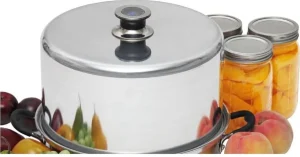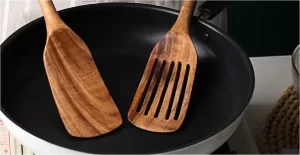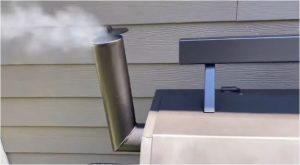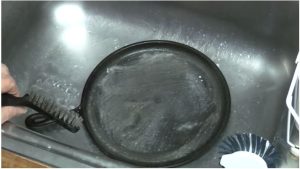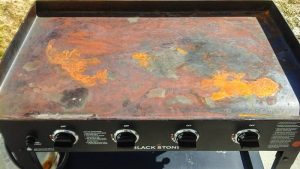No Smoke Signals: Common Causes of Wood Chips Not Smoking
Wood chips may not be smoking due to insufficient heat or improper preparation. The lack of smoke could also be a result of using overly moist chips.
Insufficient heat is a common reason for wood chips not smoking. Both gas grills and electric smokers need to reach a certain temperature to produce smoke from wood chips. Typically, wood chips start to smoke at around 570 degrees Fahrenheit. If your grill or smoker isn’t reaching this temperature, the chips won’t smoke.
Improper preparation of wood chips can also lead to a lack of smoke. For instance, if the chips are too wet, they may struggle to reach the necessary temperature for smoking. This is a common issue in electric smokers, where the chips are often soaked before use. If they’re not properly drained, they can fail to smoke.
The type of smoker can also affect the smoking process. In a Masterbuilt smoker, for instance, the chips may not smoke if they’re not placed correctly.
The chips should be placed in the designated area and not directly on the heat source. If they’re too close to the heat, they may burn too quickly and fail to produce smoke.
Read This: Top 5 Smoker Tubes for Gas Grill Reviews
Common Reasons for Wood Chips Not Smoking
1. Damp Wood Chips
Moisture is a common culprit behind wood chips not smoking. Many people soak their wood chips before placing them in the smoker, believing it will produce more smoke. While this can be beneficial in some cases, overly damp wood chips struggle to reach the necessary temperature for smoking. They may steam instead of smoke, leading to a lack of that desired smoky flavor in your food.
2. Inadequate Airflow
Airflow plays a crucial role in the smoking process. Without enough air, the wood chips can’t maintain the combustion needed to produce smoke. If your smoker is tightly sealed or overly packed with food, it can restrict airflow and prevent the wood chips from smoking.
3. Insufficient Heat
Heat is a key factor in getting wood chips to smoke. Wood chips typically start to smoke at around 570 degrees Fahrenheit. If your smoker or grill isn’t reaching this temperature, the wood chips won’t smoke. This can be a common issue in both gas grills and electric smokers.
4. Incorrect Placement of Wood Chips
The placement of wood chips in the smoker can also affect their ability to smoke. For instance, in a Masterbuilt smoker, the chips should be placed in the designated area and not directly on the heat source. If they’re too close to the heat, they may burn too quickly and fail to produce smoke.

How to Ensure Proper Smoking with Wood Chips
1. Pre-Soaking Wood Chips
Pre-soaking wood chips can help to produce more smoke, but it’s crucial to drain them properly before use. Soaking the chips for about 30 minutes to an hour is usually sufficient. After soaking, allow them to drain thoroughly to avoid excess moisture that can prevent them from smoking.
2. Using Dry Wood Chips
In some cases, using dry wood chips can be more effective. Dry chips catch fire more easily and can produce a good amount of smoke. This can be particularly useful in smokers or grills that struggle to reach high temperatures.
3. Creating Proper Airflow
Ensuring proper airflow in your smoker can help your wood chips to smoke effectively. Avoid overpacking the smoker with food and make sure the vents are open enough to allow air to circulate. This will help to maintain the combustion needed for the wood chips to smoke.
4. Maintaining Optimal Heat Levels
Keeping your smoker or grill at the right temperature is crucial for getting your wood chips to smoke. Aim for a temperature of around 570 degrees Fahrenheit. If your smoker or grill has a temperature gauge, use it to monitor the heat levels and adjust as necessary.
Troubleshooting Tips for Non-Smoking Wood Chips
1. Checking Wood Chip Quality: The quality of your wood chips can significantly impact their ability to smoke. Old, rotten, or moldy wood chips may not smoke properly. Always ensure that your wood chips are fresh and in good condition. If they’re not, it might be time to replace them with a new batch.
2. Adjusting Ventilation Settings: Ventilation plays a crucial role in the smoking process. If your wood chips aren’t smoking, it could be due to inadequate airflow. Check the ventilation settings on your smoker or grill. If the vents are too closed, it can restrict the airflow and prevent the wood chips from smoking. Adjust the vents to allow more air to circulate.
3. Modifying Heat Source: The heat source can also affect the smoking process. If your wood chips aren’t smoking, it could be because the heat source isn’t hot enough. Wood chips typically start to smoke at around 570 degrees Fahrenheit. Try increasing the heat to see if that gets your wood chips smoking.
4. Choosing the Right Wood Chip Variety: Different types of wood chips can produce different amounts of smoke. Some types of wood, like hickory or mesquite, are known for producing a lot of smoke. If your wood chips aren’t smoking, it might be worth trying a different variety.

Enhancing Smoking Performance with Wood Chips
1. Experimenting with Different Soaking Techniques
Soaking wood chips can help to produce more smoke, but the soaking technique can make a difference. Try soaking your wood chips for different lengths of time to see what works best. Remember to drain them thoroughly before use to avoid excess moisture.
2. Utilizing Smoking Aids or Enhancers
There are various smoking aids and enhancers available that can help to increase the amount of smoke produced by your wood chips. These can include things like smoking boxes or tubes, which can help to concentrate the smoke and make it more intense.
3. Understanding Wood Chip Flavors
Different types of wood chips can produce different flavors of smoke. Understanding these flavors can help you to choose the right wood chips for your food. For example, applewood chips can produce a sweet, fruity smoke that’s great for pork or poultry, while hickory chips can produce a strong, smoky flavor that’s perfect for beef.
4. Exploring Advanced Smoking Methods
If you’re an experienced smoker, you might want to explore more advanced smoking methods. This could include things like cold smoking, which involves smoking food at lower temperatures for longer periods of time. This can produce a deeper, more intense smoky flavor.
Frequently Asked Questions
Do you have to use wood chips in a smoker?
No, it’s not mandatory to use wood chips in a smoker. However, they are commonly used to add a smoky flavor to the food being cooked. Other alternatives include wood chunks, pellets, or even certain herbs and spices.
How can I get wood chips to smoke in an electric smoker?
To get wood chips to smoke in an electric smoker, ensure they are not overly damp and that the smoker is at the right temperature, typically around 570 degrees Fahrenheit. Also, make sure there’s adequate airflow within the smoker.
Are wood chips supposed to burn in a smoker?
Wood chips in a smoker should smolder rather than burn outright. If they burn too quickly, they can produce less smoke and potentially give the food a bitter taste.
At what temperature do wood chips smoke?
Wood chips typically start to smoke at around 570 degrees Fahrenheit. The exact temperature can vary depending on the type of wood and its moisture content.
How can I keep wood chips smoking?
To keep wood chips smoking, maintain a consistent heat source and ensure there’s adequate airflow. Also, consider using a smoker box or foil pouch to help the chips smolder more slowly.
Can I add wood chips to a gas grill?
Yes, you can add wood chips to a gas grill to impart a smoky flavor to your food. It’s often recommended to use a smoker box or a foil pouch to hold the chips.
How many wood chips do I need for smoking?
The amount of wood chips needed can vary depending on the size of your smoker and the length of your cooking session. As a general rule, a handful or two of chips is usually sufficient for a typical smoking session.
